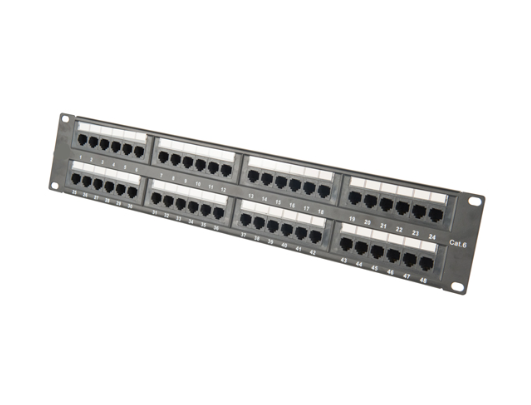News
Site Editor
 Site
https://leonetworkgroup.usa18.wondercdn.com/uploads/image/5fe152faa587d.png
Keystone jacks are a vital component of the wiring system of any modern building. They provide a standardized connection point for various data, voice, and audiovisual cables, ensuring consistent and reliable connectivity throughout the installation. Installing a keystone jack is a straightforward process that can be completed by following a few simple steps.Materials and tools you will need:- Key
Site
https://leonetworkgroup.usa18.wondercdn.com/uploads/image/5fe152faa587d.png
Keystone jacks are a vital component of the wiring system of any modern building. They provide a standardized connection point for various data, voice, and audiovisual cables, ensuring consistent and reliable connectivity throughout the installation. Installing a keystone jack is a straightforward process that can be completed by following a few simple steps.Materials and tools you will need:- Key
How To Install A Keystone Jack
Views: 537
Author: Site Editor
Publish Time: 2023-07-11
Origin: Site
Keystone jacks are a vital component of the wiring system of any modern building. They provide a standardized connection point for various data, voice, and audiovisual cables, ensuring consistent and reliable connectivity throughout the installation. Installing a keystone jack is a straightforward process that can be completed by following a few simple steps.
Materials and tools you will need:
- Keystone jack
- Keystone jack wall plate
- Screwdriver
- Cable stripper
- Needle-nose pliers
- Punch down tool
- Ethernet cable
Step 1: Preparing the cable
The first step in installing a keystone jack is to prepare the cable that will be attached to the jack. Using the cable stripper, carefully remove the outer jacket from the ends of the cable. Be sure to strip only enough insulation to expose the inner wires without damaging them. Straighten out the wires using the needle-nose pliers.
Step 2: Inserting the wires into the jack
The keystone jack will typically have a color-coded wiring diagram printed on the back. Match the colors of the wires to the corresponding color codes on the jack. Insert the wires into the appropriate slots in the jack until they are flush with the surface of the jack.
Step 3: Punching down the wires
Once the wires are inserted into the jack, use the punch down tool to secure them in place. Place the tool over each wire and press down firmly until the tool clicks. This will push a small metal tab down onto the wire, securing it to the jack. Repeat this process for each wire.
Step 4: Installing the keystone jack
Now that the wires are attached to the jack, insert the jack into the keystone wall plate. There will be small tabs on either side of the jack that will snap into place on the wall plate. Once the jack is securely attached to the wall plate, it can be installed into the wall outlet box. Use the screws provided with the wall plate to attach it to the outlet box.
Step 5: Testing the connection
To ensure that the keystone jack is properly installed and functioning, connect an Ethernet cable to the jack and check that the connected device can access the network. If there is no connection, ensure that the wiring is correct and that the punch down tool has made solid contact with the wires.
Conclusion:
By following these simple steps, you can install a keystone jack and ensure a reliable and consistent connection for your data, voice, and audiovisual cables. It is essential to follow the wiring diagram carefully and always use the correct tools and materials for each step of the installation process. With proper installation and testing, a keystone jack will provide years of dependable service.
If you want to know more about industrial network cabinet,china fiber optic splice closure,china fiber optic distribution box,please consult the fiber optic splice closure factory









